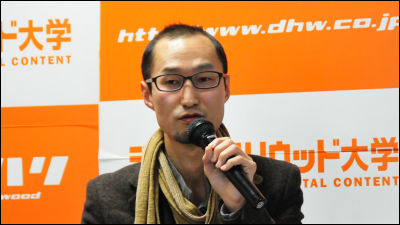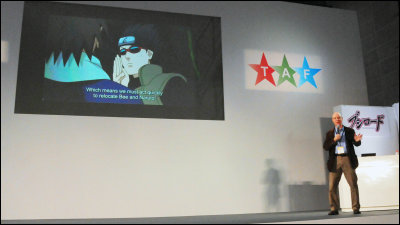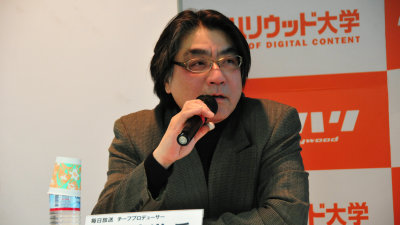How does screen media and animation spread from smartphones to 8K television
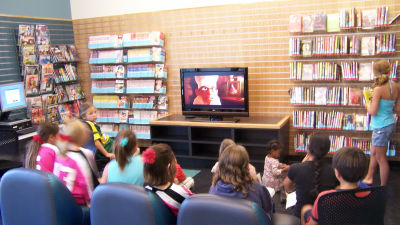
BySan José Library
Anime specialty channel of CSAT-XPresident Keisuke Iwata talked about "The Evolution of Screen Media Strategy and Animation Industry" in Anime · Business Forum + 2013. Screen media refers to TV, PC, smartphone, tablet and so on. There should be "direction" and "unsuitable" according to the work in the animation, and broad talk develops in the future such as how to be related to such screen media and what is the situation in overseas It was done.
【Digital Hollywood University】 Anime · Business · Forum +2013
http://www.dhw.ac.jp/e/anime_business2013/
Keisuke Iwata, President and Representative Director, A-T-X Inc. (AT-X), is the instructor.
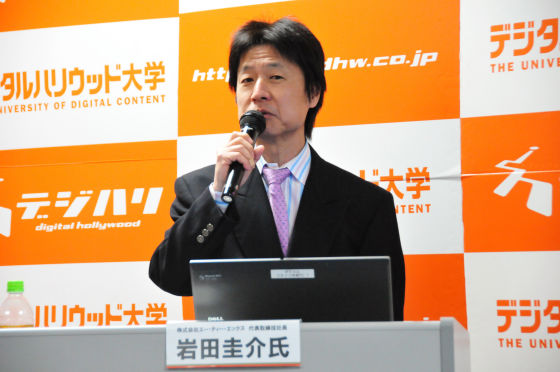
the title is"Evolving screen media strategy and animation industry"
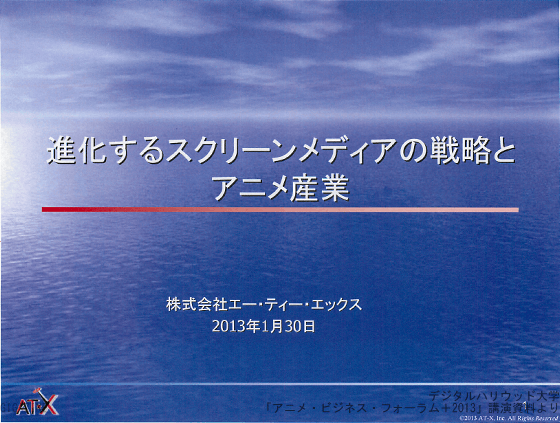
"Screen media" refers to devices such as televisions, movie screens, PCs, etc. Recently, smartphones and tablets are also included. Among these various screens, what type of animated cartoon (what is mainly related products such as business derived from animation and goods sale) and content type animation (animation itself is a product) The first theme is whether to become a position.
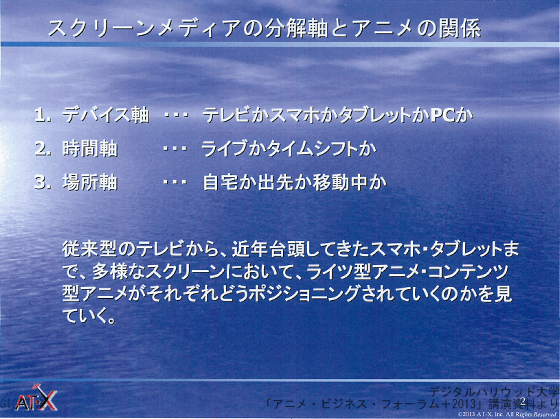
First of all, the screen medium decomposed on the device axis is kore. On the left are things like game consoles and smart TVs, which are similar to conventional screens, with tablets and smartphones in the center and PCs on the right. The usability is good on the left side, that everyone can operate easily. It is an easy-to-understand example when you think of television. On the other hand, PC, which is a multifunctional terminal, is positioned as "multi but halfway".
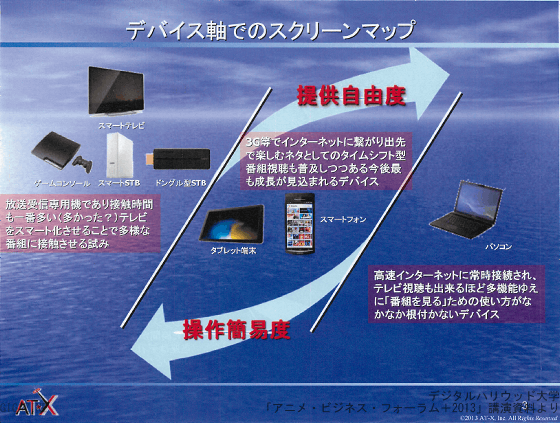
Associating this axis with animation, it is important that rights-type animation is "to be seen by many viewers" first rather than what the main part is, so even if it is real-time viewing or recording, the television is one It is suitable number. In the case of content type animation, it is easy to say "high image quality". Viewers actively seek content for viewing, and when they do not have time, they watch even where they go out so smartphones and tablets that can be viewed anywhere are the most powerful.
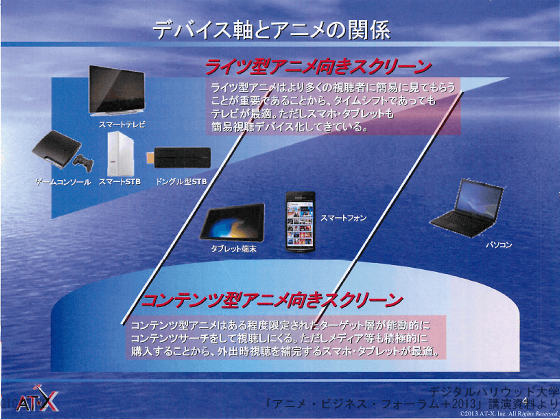
Viewing the screen media on the time axis, the TV is the basic for live viewing as it is based on linear broadcasting (broadcasting according to programming). PC will inevitably be inferior to television due to insufficient rate. Meanwhile, tablets and smartphones are getting faster, but there are still tough live viewing, and for the time being, it is the opinion of Mr. Iwata that for the time being it will be in the form of "looking at the place I brought out."

As for the relation between time axis and animation, since rights type animation has correlation with related products such as "Christmas selling warfare", the more real time it is, the better the television is the most suitable screen . In the case of content type animation, "watching" is consuming, so it does not matter much whether you watch it in real time or late, but rather it can be enjoyed over and over so that the TV is also suitable for smartphones and tablets. However, since the screen is small for PC to enjoy like a TV, it is not so suitable device because it is not as portable as tablet to enjoy on the road.
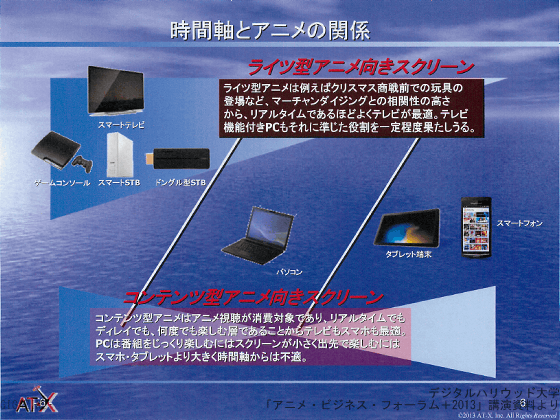
The last is the relationship with the location axis. The TV that is becoming larger is perfect for watching at home. Smartphones and tablets can be used both inside the home and on the go, but especially on the road, we show our strengths. PC in anyway position halfway.
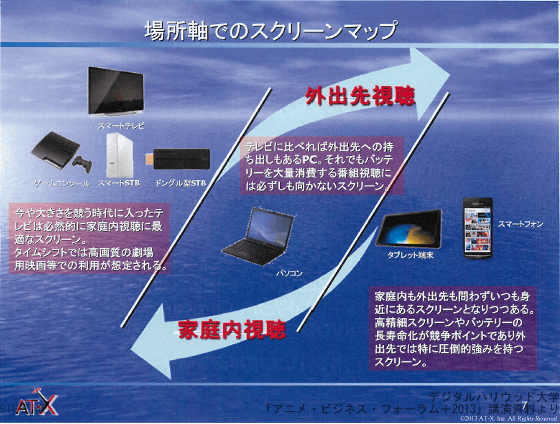
For rights type animation, there are many works for kids, the younger children are young children, the parents have the right to choose programs, so it is in a form to enjoy together, TV is the best, PC with television function conforms to that. Since content-type animation consumes "seeing" as described above, smartphones and tablets that can be enjoyed regardless of location are appropriate. However, the PC becomes inappropriate.
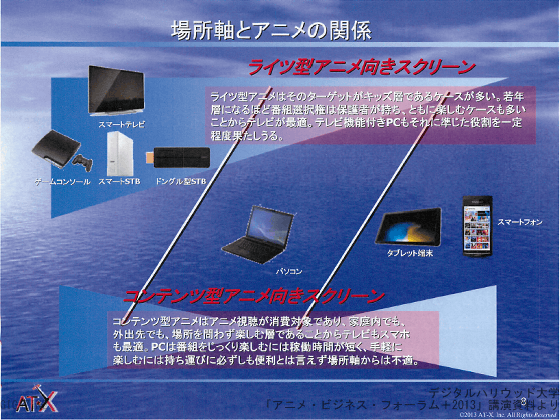
Then, what kind of movement is going on in Europe and the United States at the moment is "Code Cutting". There is CATV in the dominant position in the United States, but since it costs roughly 100 dollars a month (about 9300 yen), there is a move to discontinue by disliking the cost. The second "Over The Top (OTT)", which means that it is getting to be connected to the net over the set-top box (STB) and enjoying the program. And the third is "Subsctioption VOD (SVOD)", the service is unlimited program at about 8 dollars (about 750 yen). Because of this, too high CATV tends to be avoided. The fourth is "Catchup VOD (CVOD)", a major CATV service launched against SVOD. When I say SVODNetflixAlthough it is representative,ComcastEven CVOD, and SVOD are coming against us. In other words, pay television is entering the era of service competition.
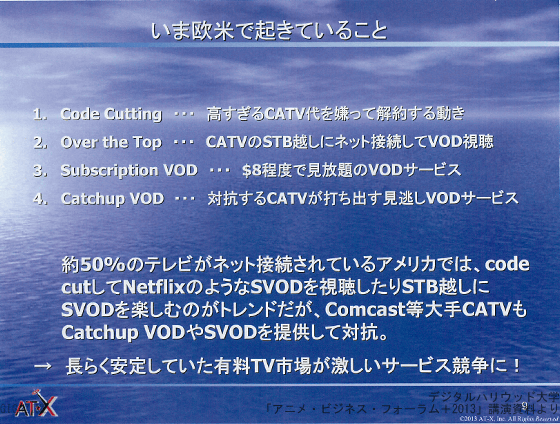
So, what is going on in Japan is that each carrier is beginning to issue dongle type STB that can be connected simply by plugging in. In CATV, the biggestJ: COMButJCNWe merge with and stand overwhelming advantage. This flow may contribute to the dissemination of SmartSTB and SVOD, Mr. Iwata. With OTT serviceHuluHow is a low-priced SVOD distributor growing? I do not yet know if it will be the same trend as the US in a few years, or will be a unique development in Japan where mobile phone companies will go with overwhelming strength.
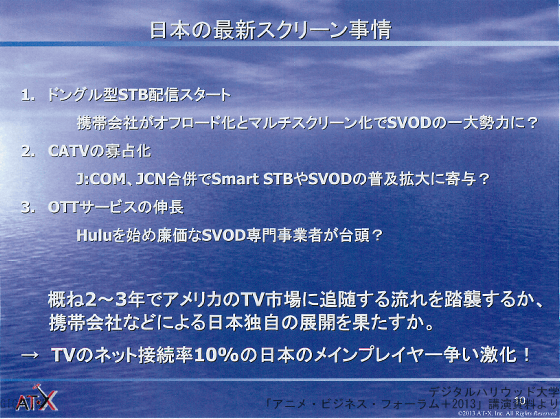
It depends on the influence on rights type animation whether or not SVOD becomes familiar, but this seems to be difficult to predict again. It is unknown whether to go to net shop on Smart TV and contribute to sales of related products. Mr. Iwata said attention is also drawn to the fact that business matching matches with this smart media comes out, and opportunities increase. However, digital related toys are becoming mainstream, and there is a possibility that the smart TV environment may become a booming business. This is the form of online to offline (O2O) which has benefits such as smart media when you apply online, and you can go to a shop dealing actually with products and buy it cheaply.
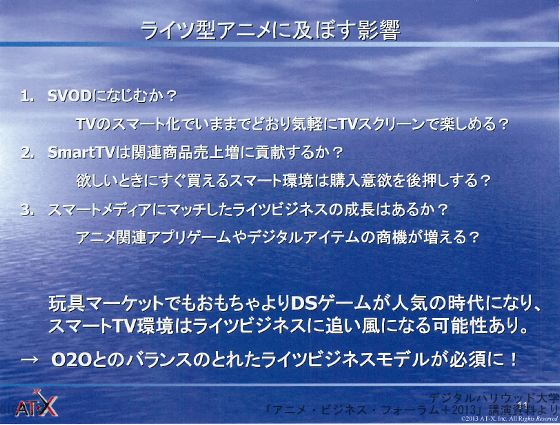
How is the impact on content type animation? There are so many fans say "I want to see it at the fastest speed", so I do not know what to do with time-shift type VOD. Mr. Iwata is watching that the point of whether to adapt or not is also a problem because TV viewing using the terrestrial wave is still done as a window as a window. Also in terms of package business, there is the question that the highest picture quality can be sold when high picture quality can be seen anywhere in the flow that the highest picture quality becomes 4K or 8K of Super Hi-Vision .... However, as for smartization It is a contact opportunity and said that it is certain to increase consumption opportunities.
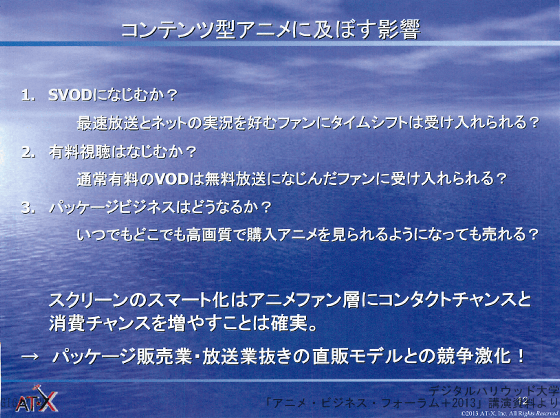
It is a good thing to increase the opportunity, but the important thing is to see the trend. Screen trends, where are the points? And what can you do with the screen function? What are the strengths and weaknesses of each anime's screen? For example, when looking at a smartphone, what is the strength and which is weak? Up to now, screen axes will be added to the expansion that was the time axis. Since screen sizes are various, it is important to make screen planning from the stage of production. In local business in overseas business, you put on music that was nationwide, cut where you do not fit ... and so on, but there are plans for dealing with multi-screen in Japan. Iwata expressed this as "screen rise".

As for what actually happens to the market, the domestic content market has a picture size of 4 trillion yen. Worldwide, the content market is about 600 billion dollars (about 56 trillion yen), occupying most of the market in the US, Europe and Asia alone.
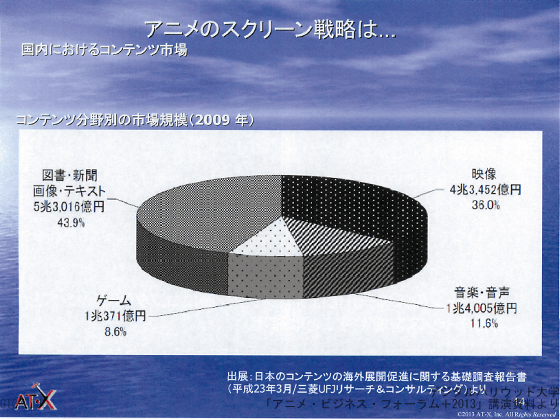
As for the content export value in Japan, the animation is 8.22 billion yen, and the share is 1.5% of the export value. The game is 95% overwhelming.Cool JapanI said, I have nothing serious at all, "Iwata. Even though broadcast programs are included, it is just 3% and can not be said as "share", and it is expressed as "Japan is Galapagos".
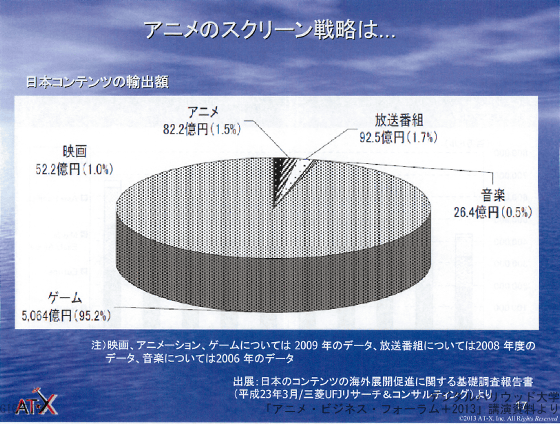
Japan Video AssociationThe figures of overseas sales by examination are here. Organized a forumInternational Anime Research InstituteofMitsutaka TakahashiAs I pointed out that the figures are falling compared to the time of the animated bubble, it has come down to the peak in 2006.
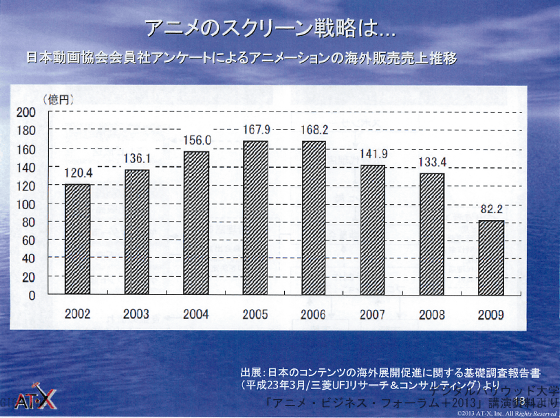
It is a comparison of domestic market and export value of each contents field. Regarding the video and music fields, we do not export 1% of the domestic market size. This temperature difference is hidden.
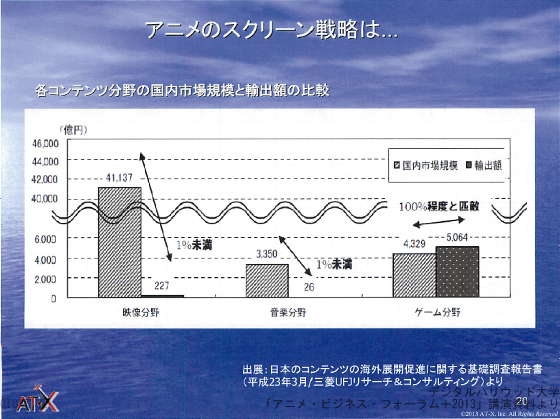
After the animation bubble in 2006, there was a Lehman shock in 2008 and the economy fell, but the Internet infrastructure improved. In response to this, the total production volume of animation has been steadily decreasing, but it hit bottom last year, and it is entering the production increase system in 2013. Speaking of the situation of the broadcasting frame, there is no doubt that a considerable number will increase to the extent that there are not enough frames in autumn.
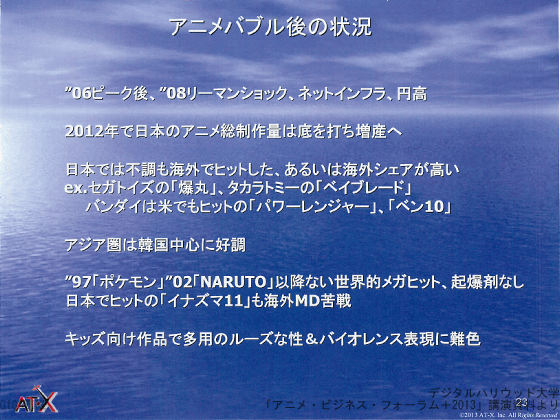
As for how the situation of animation is,Sega ToysofBakuganHe was tremendously hitting abroad,Takara TomyofBeybladeAlso has an overwhelming share in overseas.BandaiOkay.Power RangerHas hit worldwide, and the USA is the center of the marketBen 10There is also. In the Asian region, sales are continuing, especially in South Korea.
However, as we are talking about every year, in Japan,NARUTO - NarutoFrom now on, it is the current situation that there is no global hit. A big hit in Japan "Inazuma ElevenBut, I feel that struggling with overseas merchandising, as a business is stopped there.
When bringing Japanese animation abroad, Japanese works are seen as being loose making way. Particularly with regard to sex & violence, it does not apply to common sense of each country, and there are many buyers who show their disapproval unless they are made considering that.
Looking at the online market, it started in 2009Crunchy rollNow has 100,000 paid members and 7 million free members.
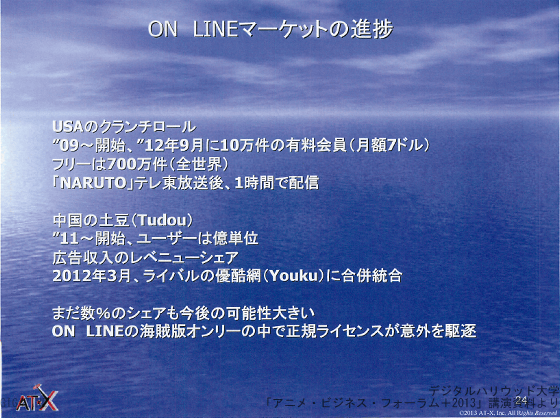
The Chinese market is extremely difficult and political problems are bouncing back soon, but Tudou, which began in 2011, has revenue sharing of advertising revenue with 100 million users. This Tudou merged with rival Youku and integrated. The share is still a few percent, but I think that the possibility of growth is great. It is also effective that expelling pirated edges by issuing regular licenses.
As a challenge in overseas deployment, "the difference in culture is big," Iwata. It is not a difference between food, clothing, shelter and living, but the difference in the stance at the time of production seems to be a big obstacle. Because I made cookies in Japan and sent it overseas, when the film came back, for example, I did not have time to fix it the first time, but I did OK but the second time I wanted to fix it because I had plenty of production I point out. Then, he says, "I went through the first visit, why should I fix it?" This seems to be large deviation of feeling "what to do to improve things".
While the word "cool Japan" is often used, there are times when it is said that "Korea is doing it with national policy, Japan does not do it, and is lagging behind." However, it seems that South Korea is not selling so much. For example, Korean current drama customers are almost in Japan, and they do not do business in Western countries.
In overseas markets, Japan is not a garage but "Garabu (Galapagosized booth)" Is not it, Mr. Iwata. The things that are made in Japan are still only what we recruit (collect) in Japan, Japan alone is familiar with "cool Japan". Disney etc. coming to Japan are deploying all over the world and having pipes, but pointed out that Japan was completed only in Japan.
In the future media market, smart TV will continue to increase rapidly.
Due to the spread of smartphones and tablets, the VOD market is also expected to expand from 130 billion yen to 140 billion yen.
So, how do you do with any screen media, from small devices at hand to large 8K ... this is "today's homework" by Mr. Iwata. "If you do not think properly it will be destroyed by big players like Disney," Iwata. In France, Japanese cartoons are enough to be used in university lessons, and pirated editions are made as much as possible because there is reasonable soil, but it is not business. I concluded that it would be the biggest problem and problem for overseas business.
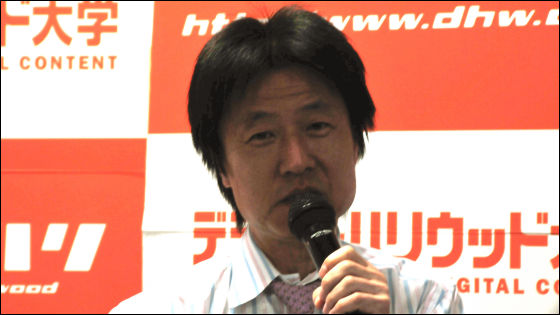
The following are questions and answers
Q:
As a new recorder, there is a story that there is something that can be transferred to iPhone or tablet with the picture quality broadcasted on TV. What happens to the TV window when TV picture quality things can be seen on multiple devices?
Iwata:
It is data in the USA, but in the end only the large TV is enjoying the content. The number of pixels of mobile phones and smartphones in Japan is getting bigger, but what they enjoy is what is overwhelmingly large TV. If it is said that it is on the road or the destination, I think that there is nothing to go there. Another thing, once you can do that, how do you solve copyright rights? If CS is a program department business operator 24 hours streaming broadcasting, how far can you watch all-lights? ITTV is associated with CS broadcasting stations, but what to do? If there is a drawing, expansion according to each country becomes possible. I think there is a possibility that the market itself can be expanded with the content itself, not a rights type.
Q:
About the overseas development of AT - X, what kind of thing are you planning to do in the future?
Iwata:
In the case of AT-X, we are doing business to animation television stations. I am currently broadcasting at the domestic level for 24 hours, but I am considering whether I can operate this overseas as it is. Until now, I invested in the content, return is returning, I earn foreign currency, but I wonder if it can spread from there. Now AT - X is a single channel, users are 150,000 niche media, so I am targeting core animation fans, but I am thinking whether single channel is good or not.
Q:
When doing with streaming, what kind of device do you think about?
Iwata:
As for the distribution problem, AT-X's policy is to go with a flat relationship with any platform.
Related Posts:
